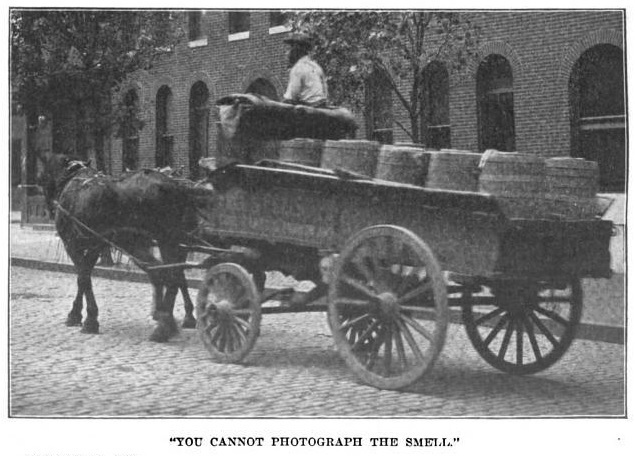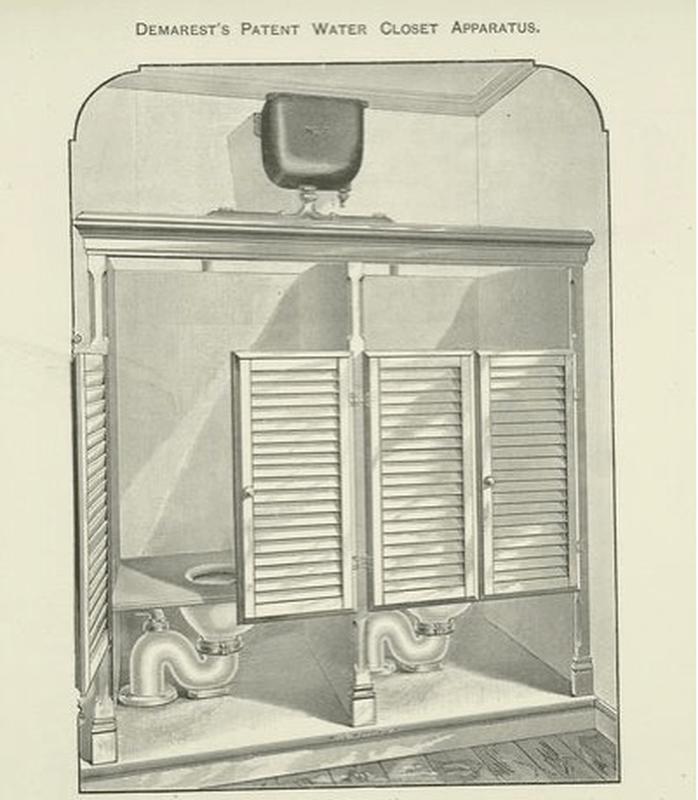Outhouses and Night Soil Men: New York City Before the Invention of Indoor Plumbing and Indoor Toilets
More than a century ago, New Yorkers only had a few choices when it came to their lavatory needs— either to visit an outhouse or make use of a chamber pot.
When indoor toilets were first introduced during the second half of the 19th century, it didn't instantly gain popularity. Initially, a few residents feared that this contemporary invention would bring poisonous gases into their homes that would lead to illness or even death.
A number of New Yorkers relied exclusively on outhouses in backyards and alleys until the late 19th century.

Some residents had their own outhouses, but others living in a tenement would have shared toilets with their neighbors. The outhouse to resident ratio differs, but most tenements had three to four outhouses, with over 100 people living in that building. Individuals were meant to share a single outhouse with nearly 25 to 30 of their neighbors. This leads to common problems such as long line-ups and limited privacy.
If bathroom visits were undesirable during the day, when night time comes, most city residents rely on their chamber pots; especially in the dead of winter when rushing through several flights of stairs to the street posed additional dangers.
Most tenements had little or no ventilation, which makes the stench from the chamber pots hastily unbearable. These chamber pots had to be emptied on a regular basis into the outhouses to control the stinky smell.

In rural areas, outhouses were usually built temporarily over a hole in the ground. The outhouses were simply moved to a new location when the holes are filled up, just covered over with fresh soil. In urban areas, removing human waste was a thriving business during this century, as there are limited space which means that the outhouses were permanent structures and somebody must remove those wastes once filled up.
During that time, human excreta was euphemistically known as “night soil.” Apparently, this is because the so-called night soil cart men, who worked for companies that begrudgingly won the city contract for waste removal, accomplished their tasks largely after dark. Their undesirable job required shoveling waste from the city’s outhouses into containers then dispose of them (oftentimes other refuse and animal carcasses would also be collected).

Although these night soil were being dumped in empty lots on the Upper West Side (a few of this human excrement was said to be used as fertilizer at the time of the construction of Central Park), most of the city’s wastes were discarded into the city’s surrounding waterways. At best, night soil was sailed on steamboats and unloaded far out in the harbor (this form of disposal was legal at the time). At worst, these were simply dumped off the side of piers of the East River and Hudson.
When indoor toilets arrived in New York City, they were nearly refurbished. In 1775, the first franchise for a flushing lavatory was issued to Scottish inventor Alexander Cumming. His invention would continue to be perfected in the coming years, but still, indoor toilets were not yet standardly used in most cities and did not extend to many rural areas until decades later.

2 obstacles delayed the arrival of indoor toilets in New York.
First, building a sewage system in an already developed urban area proved to be quite challenging, expensive and at times, a politically belligerent endeavor. For this matter, Brooklyn had a distinct advantage and surpassed Manhattan on the sewage front.
Currently, New York has over 6,000 miles of mains and sewage pipes with a few of the pipes dating back to the mid-nineteenth century.
The second obstacle pertains to, then, broadly accepted theory about noxious sewer gases. While sewer gases are bothersome (modern plumbing usually prevents seeping gases into homes), during the 19th century, many physicians and the general public conclude that if the sewer gases were inhaled, this could lead to severe illness or even death. This is due to the strong belief that the gases carried disease.
Only until the turn of the 20th century, several people from the medical profession conceded that sewer gases were not a source of illness. On the contrary, continuously denying the city residents of these indoor toilets was mostly augmenting spread of deadly diseases.
With this realization, installation and access to indoor toilets and clean water across New York City reinforced. The Tenement Act of 1901 states that, “In every tenement house here after erected there shall be a separate water-closet in a separate compartment within each apartment.” Although new tenement owners had to comply and almost all buildings erected after 1910 were mandated to have indoor toilets, still many existing tenement owners were sluggish to follow the new regulations. In 1937, roughly 165,000 families living in tenements were still unable to access private indoor toilets.
Comments
Post a Comment